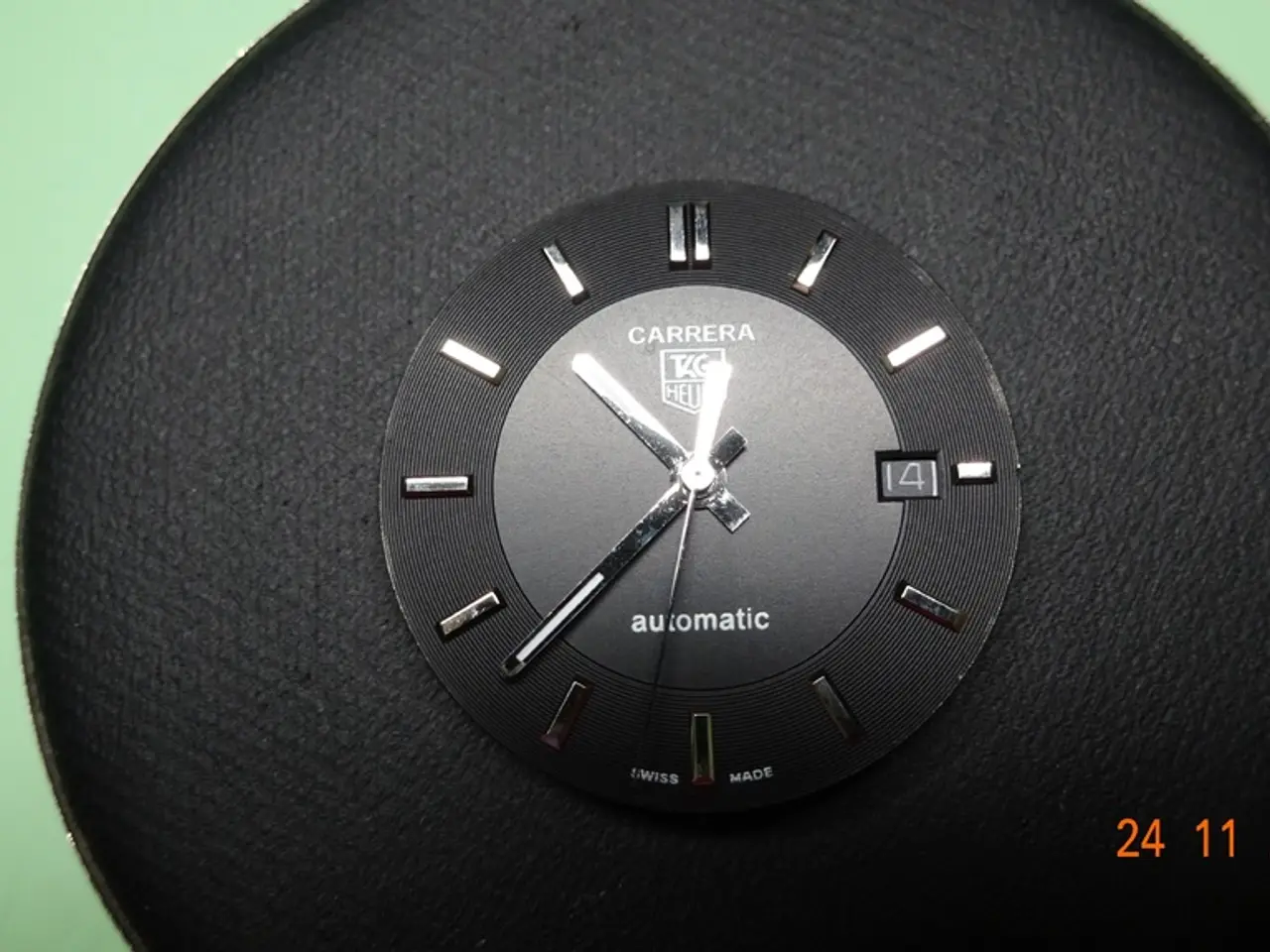Relationship with a Hamburg Amerikanische Uhrenfabrik (HAU) stand clock
In our second instalment of this two-part series, we delve deeper into the servicing of an 8-day Countwheel Strike Movement from the Hamburg American Clock Company (HAC), a significant German clock manufacturer founded in 1873 by Paul Landenberger and Phillipp Lang.
The clock purchased during the Christmas season in Ottawa is an English time and strike clock, with a commemorative plaque stating the year 1926. However, the exact year of production for the clock movement cannot be accurately determined beyond this date.
The clock, which requires service and is likely to have not been cleaned in a clockmaker's shop for a long time, is made by HAC or HAU. The company's famous crossed-arrows trademark, established in 1892, can be found on the movement or dial, although the exact wording and logo style may vary.
To date a HAC/HAU clock from around 1926, several methods can be employed. Examining the maker’s marks, clock style, serial numbers, movement design, and any labels or patents on the clock are all useful. For this specific model, key features to consider include:
- Markings and Labels: Look for the factory name or trademark stamped on the movement or dial. Any patent or manufacturing date marks can help narrow the production year.
- Movement Type and Design: Identifying the escapement style and examining the quality and style of the movement can assist in dating.
- Case Style and Construction: The clock’s design can provide a dating clue, whether it reflects Art Deco trends from the mid-1920s or an earlier style. Materials and finishing typical for the era also matter.
- Serial Numbers: Cross-referencing these with known production records or catalogs (if available) can verify the approximate date.
While specific detailed records for HAC/HAU clocks circa 1926 are not widely published online, these standard horological dating methods are applicable. Consulting clock collectors and experts in specialized forums and vintage clock sites, or a professional appraiser, can help confirm dates and identify features typical of 1920s Hamburg American clocks.
Interestingly, the clock's movement has many cutouts and additional holes, indicating it is a late production model, closer to the 1926 date. The seller of the clock, a clock collector who was unaware of the clock's German origin, adds an intriguing twist to this servicing project.
Stay tuned for the next instalment as we continue our journey into the world of clock repairs and restoration. If you missed the first part of the series, you can find it here.
- The vintage clocks from the Hamburg American Clock Company, particularly those from around 1926, can be dated using methods such as examining the maker’s marks, movement type, case style, serial numbers, and any labels or patents on the clock.
- In addition to clock repairs and restorations, our series also covers various aspects of lifestyle, including fashion-and-beauty, food-and-drink, home-and-garden, relationships, pets, travel, cars, and shopping.
- After the servicing of antique clocks, one might enjoy a relaxing evening with a glass of wine, part of the food-and-drink segment of our series.
- When traveling, one could visit flea markets or antique stores to find unique vintage clocks, adding a touch of luxury to home-and-garden decor.
- For those who own pets, stylish and functional pet accessories can be found while shopping online or in stores, as part of the fashion-and-beauty segment of our series.





